1 Introduction to AI in Finance
Artificial intelligence has moved from the periphery to the core of modern finance, shifting the conversation from if to how fast institutions can adopt it. Finance is inherently a data-rich domain, spanning structured and unstructured, streaming and static sources, where decisions like lending, trading, and compliance are continuous “data events.” AI methods—machine learning, deep learning, NLP, anomaly detection—unlock adaptive, pattern-finding capabilities that go beyond fixed rules, but they must operate under finance’s unique constraints: strict regulation, fairness and explainability demands, high-stakes precision, and fast-changing markets. The result is a strategic imperative to align AI innovation with measurable business outcomes and robust governance.
AI’s impact is best understood across four pillars. In risk and compliance, dynamic credit scoring blends traditional and alternative data for faster, more accurate underwriting, while modern fraud and AML systems reduce false positives and surface hidden patterns in transaction networks. In investment and market intelligence, AI fuses alternative datasets and research at scale, helping identify signals and synthesize insights rapidly. On the customer side, embedded and personalized experiences are powered by real-time risk decisions and continuous monitoring. Operationally, automation streamlines document processing, data quality, and routine workflows, freeing teams to focus on higher-value tasks and reshaping cost structures and workforce needs.
To build durable solutions, the chapter proposes a four-layer approach. The Data Asset layer emphasizes quality, lineage, security, compliance, and domain-guided feature engineering. The Modeling layer translates features into predictions using techniques from logistic regression and gradient-boosted trees to deep learning and LLMs, supported by explainability and MLOps for retraining and drift control. Strategy and Monitoring convert model outputs into policy-aligned actions with thresholds, fairness checks, domain metrics (e.g., K-S, AUC, Sharpe), and continuous evaluation. The Application layer delivers decisions to users and operators with feedback loops that improve upstream components. A credit scoring workflow illustrates this end-to-end pattern, and the chapter closes with practical tooling—Python, scikit-learn, TensorFlow/Keras, optional LLM integration, Airflow for orchestration, Evidently for monitoring, and accessible datasets—showing how to implement scalable, compliant AI systems in real financial settings.
How AI in finance differs from general AI applications. Unlike many industries, finance requires continuous adaptation to changing markets, strict regulatory compliance ensuring fairness and explainability, uncompromising precision to handle high-stakes decisions, and the integration of diverse, complex data. These conditions shape every aspect of building and deploying effective AI-driven financial solutions.
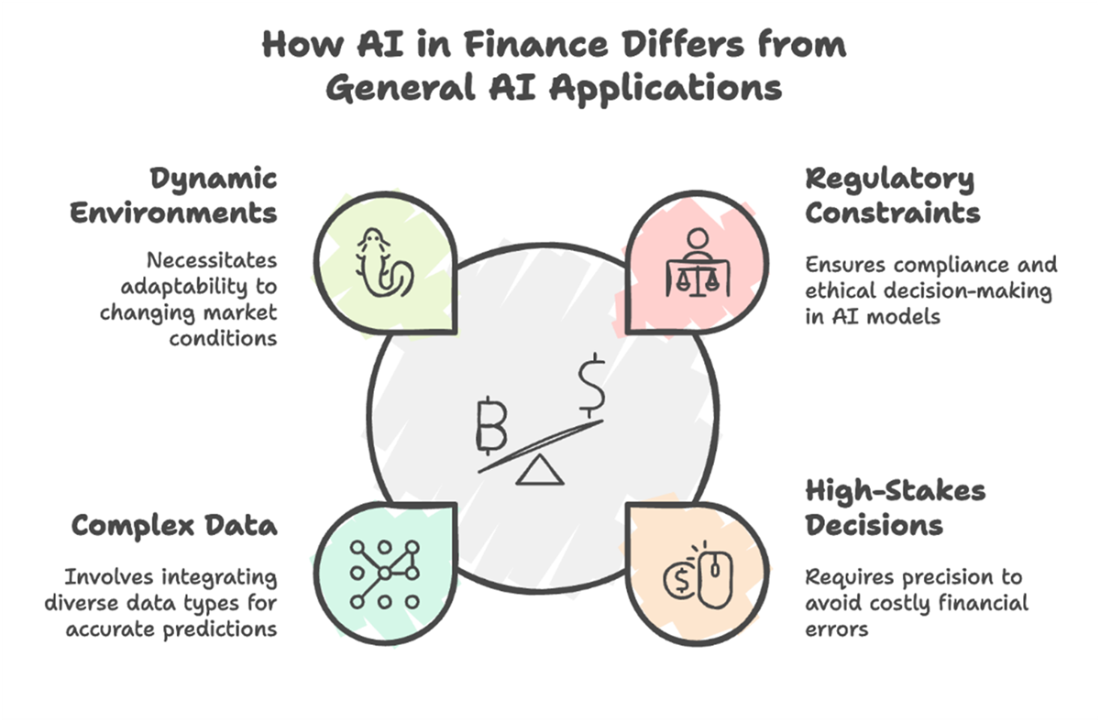
Evolution of AI in Financial Services. This timeline illustrates four major milestones in the industry's journey, from the static, rules-based systems of the 1980s and 1990s to today's generative AI and autonomous agents. Each phase—early machine learning, the rise of big data and the cloud, and the current wave of large language models—expanded AI's capabilities and its impact on the competitive landscape.
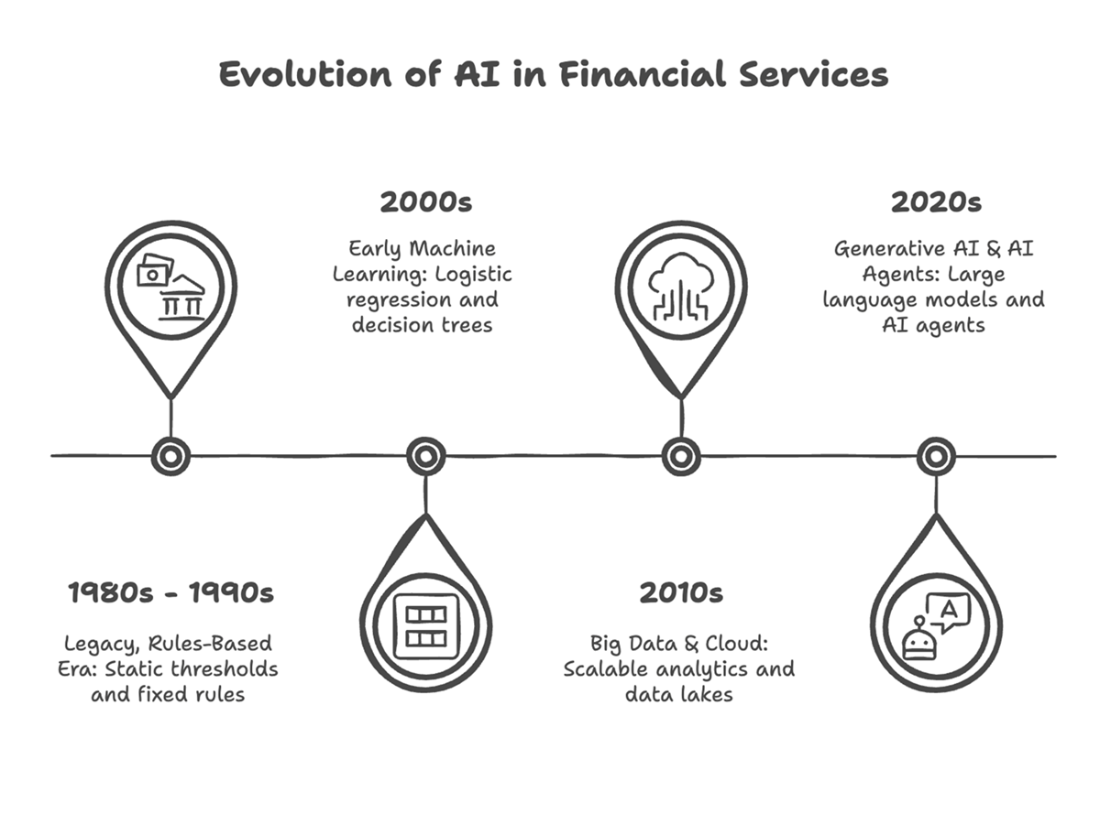
The Data Asset Layer. This figure illustrates how raw data—repayment histories, credit bureau snapshots, and alternative signals—flows into specialized data marts. Ensuring data lineage, access control, and regulatory compliance are critical steps before modeling. By creating consistent, domain-focused features, the Data Asset Layer provides a solid foundation for accurate credit decisions.
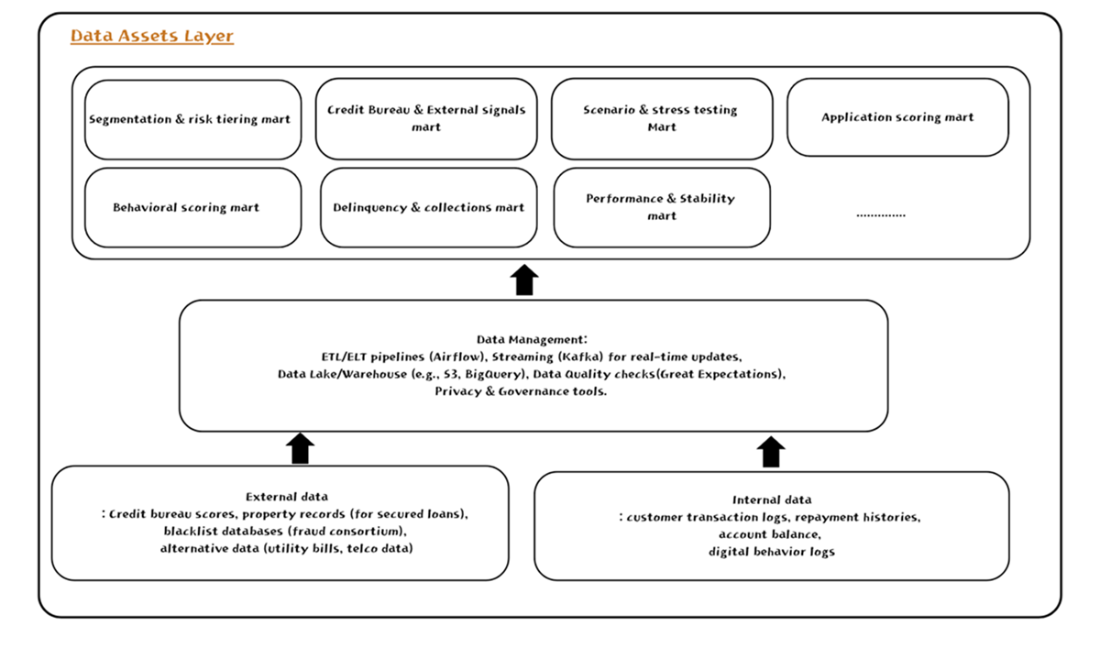
The Modeling Layer. Here, AI models turn curated features into default probabilities, fraud signals, or risk segments. Explainability tools (e.g., LIME or SHAP) offer transparency into each factor’s influence on the final score. Ongoing MLOps practices—such as scheduled retraining or hyperparameter optimization—help keep models current in shifting economic climates.
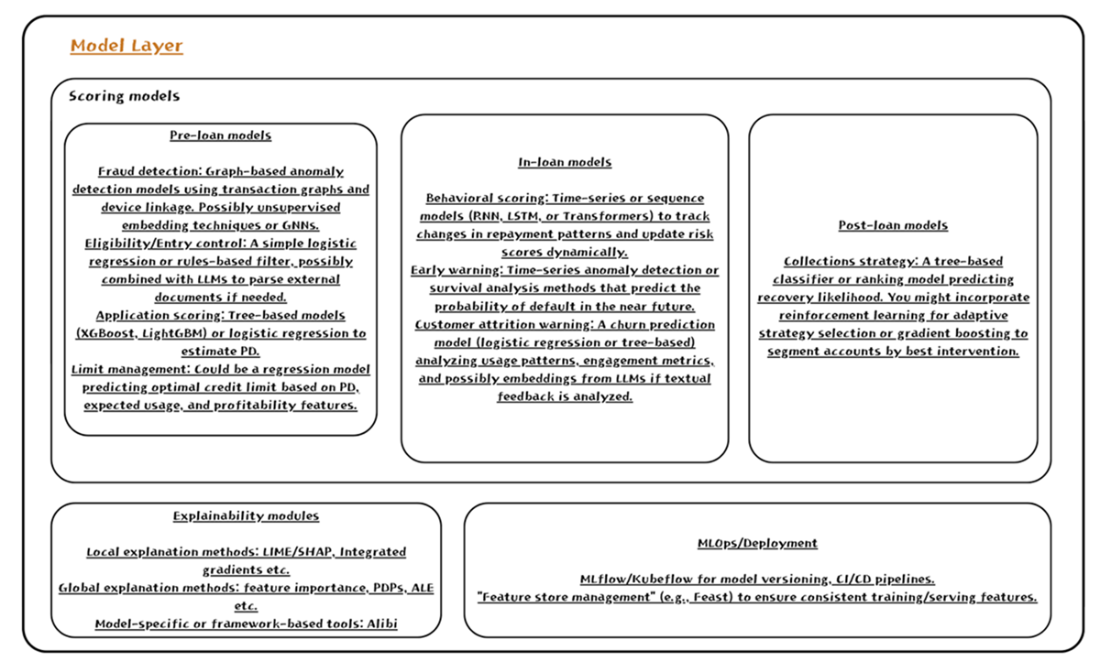
The Strategy & Monitoring Layer. Domain metrics, rate caps, and threshold policies shape how raw scores become lending actions. Ongoing monitoring detects data or concept drift, ensuring the model’s real-world performance remains stable. A/B testing and other experimentation approaches allow teams to refine credit strategies without risking large-scale exposure.

The Application Layer. Loan officers, collection agents, and end customers interact with AI-driven outcomes via dashboards or real-time notifications. By bridging front-end systems (like customer portals) and back-end rule engines, actions like approvals, limit changes, or fraud checks happen seamlessly. Because it’s closely tied to monitoring feedback loops, the Application Layer can adapt quickly to new data or policy shifts.

Summary
- AI in finance integrates data-driven modeling techniques into traditional workflows, enabling improved risk assessment, enhanced customer experiences, advanced trading strategies, and more streamlined operations.
- Understanding core building blocks—Data Asset, Modeling, Strategy & Monitoring, and Application Layers—helps break down complex AI systems into manageable parts.
- A concrete example in credit scoring shows how these layers interact: raw data transforms into predictive insights, which then guide policies and final lending decisions.
- Tools and technologies like Python, ML/DL frameworks, and optional orchestration and monitoring tools provide a flexible, accessible stack for building and maintaining financial AI solutions.
- This book teaches AI in finance through hands-on projects, real-world datasets, domain-specific metrics, and evolving model lifecycles—equipping you to adapt these methods beyond the examples given.
- By the end of Chapter 1, you know what to expect: practical guidance, multiple scenarios, ongoing refinement, and a focus on integrating AI into real financial operations for lasting, scalable impact.
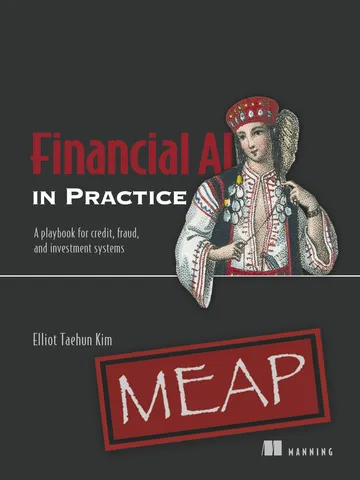 Financial AI in Practice ebook for free
Financial AI in Practice ebook for free